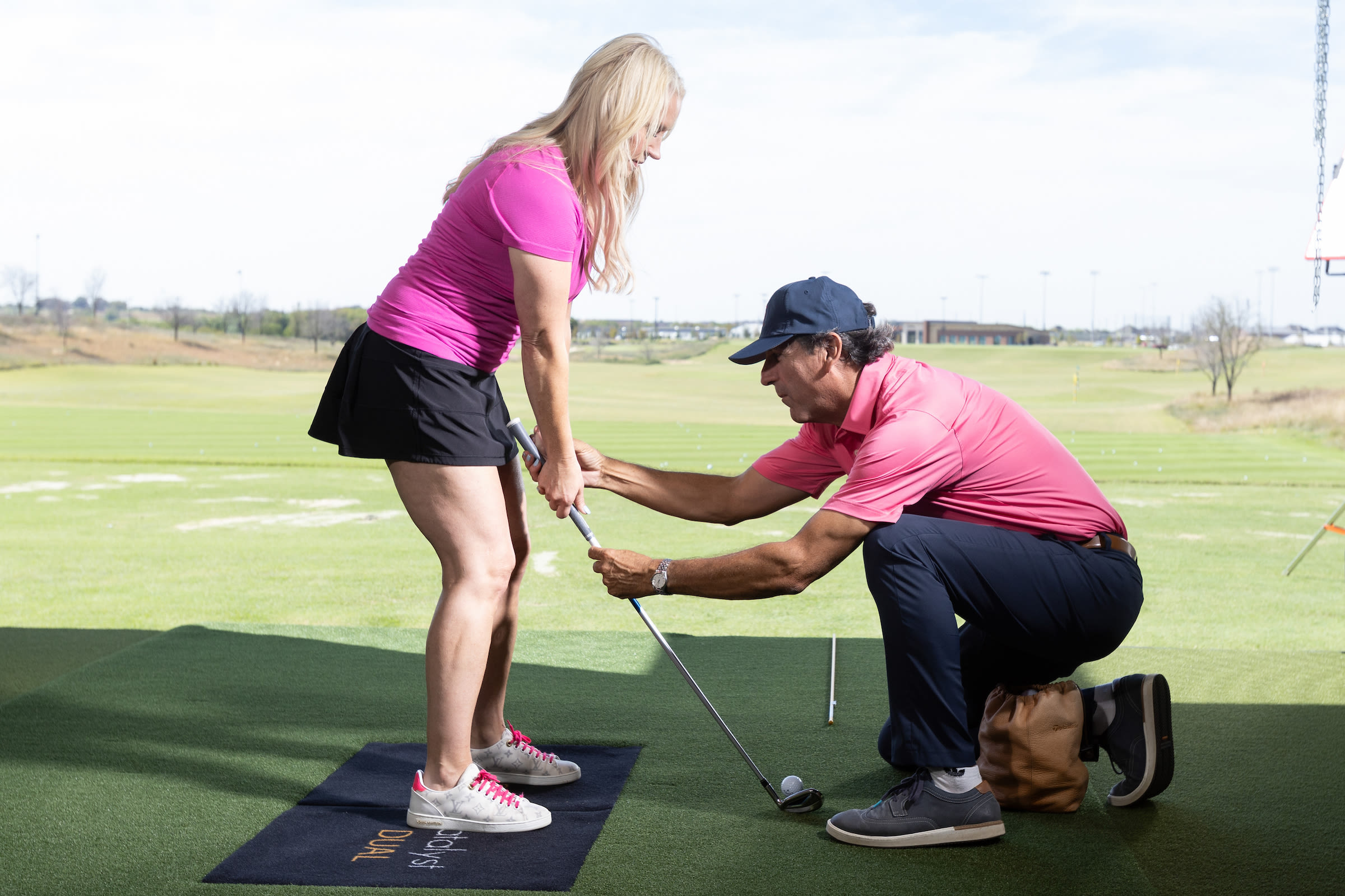From the PGA
How to Become a PGA of America Golf Professional: Three Things to Know
By Ryan Adams, PGA
Published on

First things first. Let's clear something up that's a common misconception.
The PGA of America and PGA TOUR? They're not the same. For the first 52 years of the PGA of America, they were, in fact, under one roof but in 1968, tour professionals broke away and formed what's now the PGA TOUR.
And you know who's on the PGA TOUR. Tiger Woods, Rory McIlroy, the like. But someone you come in contact with much more regularly is a PGA of America Golf Professional.
Golf Professionals don't compete with Tiger and Rory week-in, week-out (minus a few occasions; we're looking at you Michael Block) but instead . . . they are the foundational pieces of what keeps golf moving forward each day.
They're the ones who help you get better at golf. Or the ones who help you pick out a shirt for your sibling in the golf shop, or perhaps get you fit for a new set of irons. They're the ones who have the insight on where to travel (and when) to play golf outside of your local spot but also keep tabs (working with the superintendent) on making sure your course is in tip-top shape.
The best part? Becoming a PGA of America Golf Professional is open to anyone. Yes, there's some hard work and requirements you have to take care of to get a ", PGA" behind your name, but if you have the right amount of love and drive, there's no job title too big for you in the golf industry.
So you're probably wondering, "Where do I start?" Let's dive in.
Choose a path that fits you
To start, aspiring Golf Professionals can go through the PGA Associate Program or PGA Golf Management University Program.
The first option is a go-at-your-own pace style, award-winning Professional Golf Management (PGM) education curriculum that requires you to work at a golf course. You'll have to pass a background check, then you're off to the Qualifying Level, which is essentially an intro to being a PGA of America Golf Professional. Once you pass that, you'll go through three levels of coursework, attend seminars at the Home of the PGA of America in Frisco, Texas (an excellent way to build relationships), and eventually choose a career track.
If you're not working in golf yet, no worries. Book a consultation with a PGA of America Career Consultant who can help you get started.
The second option is geared more toward those seeking a traditional college experience, getting their degree and going through the PGM curriculum at the same time. It takes 4.5 to 5 years to complete the University Program, between 16 months of internships and a degree program, which range from business to hospitality to turfgrass management. There's currently 16 schools across the country that offer a PGA Golf Management Program and can answer any questions you have about this option.
On a personal note, I am a graduate of one of the University Programs and it was maybe the best choice I could've made in my senior year of high school. Between the internships, connections and support system, it was an experience I'll never regret.
Sharpen your skills for the PAT
Here's the most critical part of the entire process of becoming a PGA of America Golf Professional. The PAT, or Playing Ability Test, is what its name says it is: you need to showcase your playing ability and put it to the test.
That's accomplished by completing two rounds of golf (36 holes), shooting equal to or lower than the course rating for 36 holes, plus 15. PATs are formally administered by PGA Sections, so there are options across the country for you to try. Check out the schedule here. Scores from PGA events, collegiate tournaments, USGA events, and several other types of events can also be used to satisfy the PAT requirements. Participants in standard 36-hole PAT events also have the option to combine two 18-hole scores from multiple PAT events within a year to meet the 36-hole requirement. More on that here.
Once you've entered the the Associate or University Program, you'll have eight years to pass the PAT. There's nothing really tricked up about the golf courses that host PATs either. The pins are usually in the middle of the greens, the yardage isn't overly long.
The key with the PAT is feeling comfortable. Don't sign up at a course that you struggle at, or doesn't fit your eye because when the pressure is on, it'll be even harder to pass. Find a spot, you feel good about, get in as many practice rounds as you can, and work on your short game. I made a five-footer to pass my PAT on the number, and can attest that those short putts count just as much as your tee shots!
Hit the books (and the course)
Finally, the last step is completing your education journey, which is an exercise in self-discovery as much as it is learning.
As discussed earlier, after the Qualifying Level, there's three levels of education you need to go through, no matter if you're in the Associate or University Program. After you complete Level 1, you'll pick a career path between Golf Operations, Executive Management and Teaching & Coaching. Think carefully about where your passions lie: Do you want to own your own business or be a GM or CEO of a course? Executive Management might be a good choice. Teaching & Coaching is for those with a passion to help others get better, but also expand their knowledge of instruction to become go-to coaches. Golf Operations is a more traditional track but allows you to see every part of the education program.

In each level, you'll attend seminars in Frisco, Texas, with the world-class PGA of America Education Team. It's a great chance to network and build relationships with other aspiring Golf Professionals so take advantage of the time together. You'll also complete Course Manuals ahead of seminars and fill out a Work Experience Portfolio for each level. The portfolio puts you in a real-world situations and is a great way to learn from your mentors at the course you work at.

Finally, the knowledge tests. Each level has them and once you complete all three - and pass your PAT - well, guess what?
You can apply to become a PGA of America Member, joining the 30,000 strong who love the game. Ready to get started?



